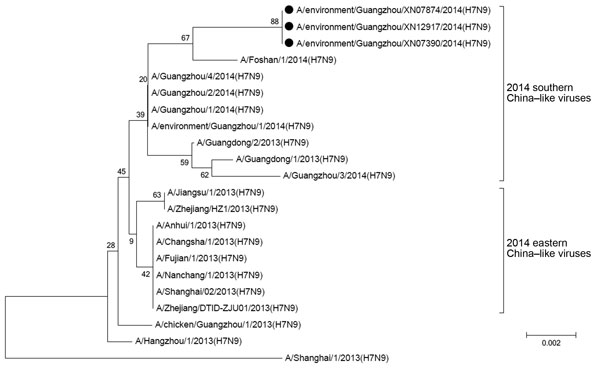Volume 21, Number 10—October 2015
Research
Effect of Live Poultry Market Closure on Avian Influenza A(H7N9) Virus Activity in Guangzhou, China, 2014
Figure 4

Figure 4. Phylogenetic analysis of hemagglutinin genetic sequences of an influenza A(H7N9) virus isolated from an environmental sample collected at a retail live poultry market under enhanced surveillance, Guangzhou, China, 2014. Black circles indicate 3 strains collected before (February 13), during (February 15), and after (March 17) a 2-week market closure. Scale bar indicates base substitution per site.
1These first authors contributed equally to this article.
2These senior authors contributed equally to this article.
Page created: September 22, 2015
Page updated: September 22, 2015
Page reviewed: September 22, 2015
The conclusions, findings, and opinions expressed by authors contributing to this journal do not necessarily reflect the official position of the U.S. Department of Health and Human Services, the Public Health Service, the Centers for Disease Control and Prevention, or the authors' affiliated institutions. Use of trade names is for identification only and does not imply endorsement by any of the groups named above.